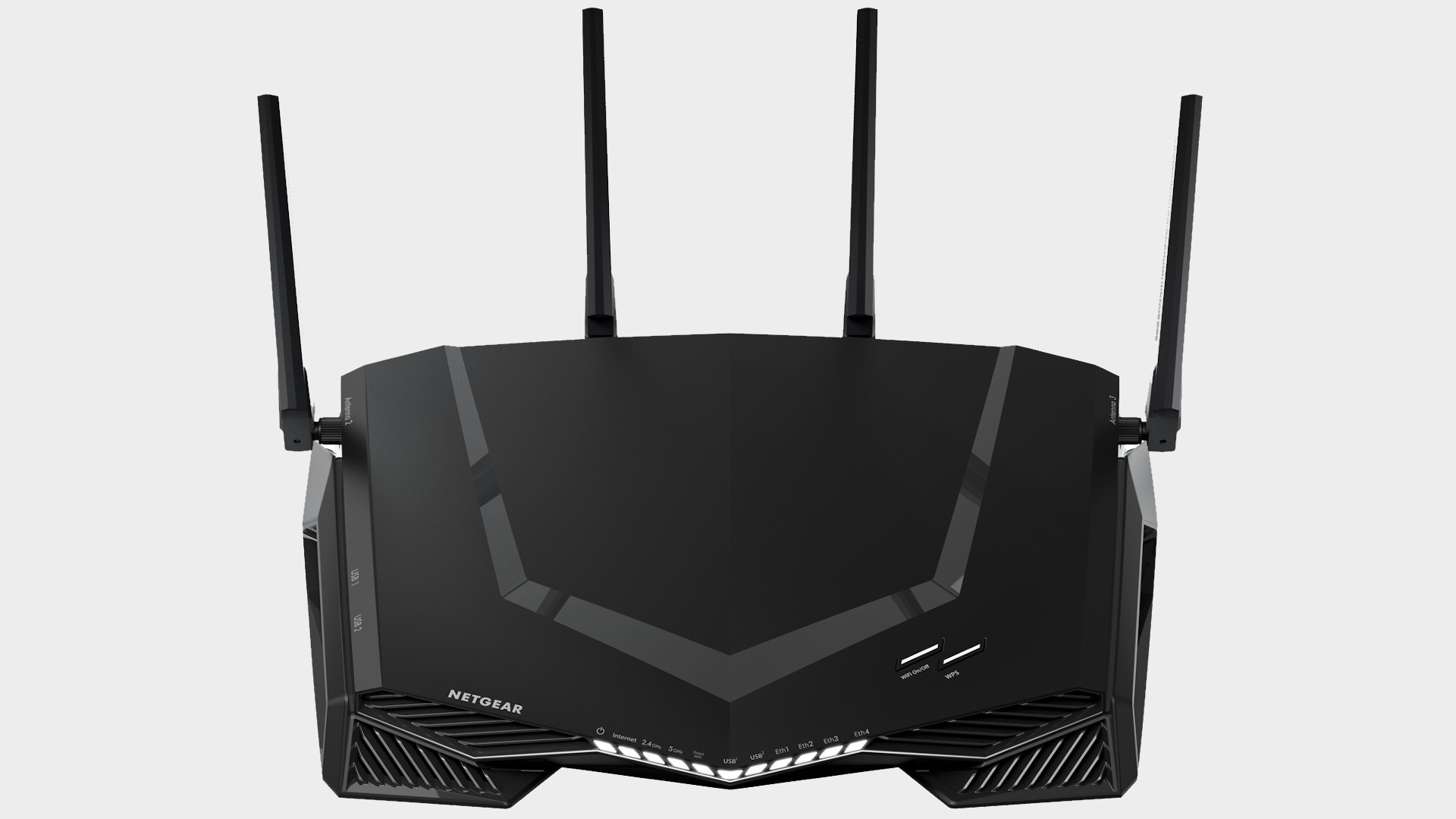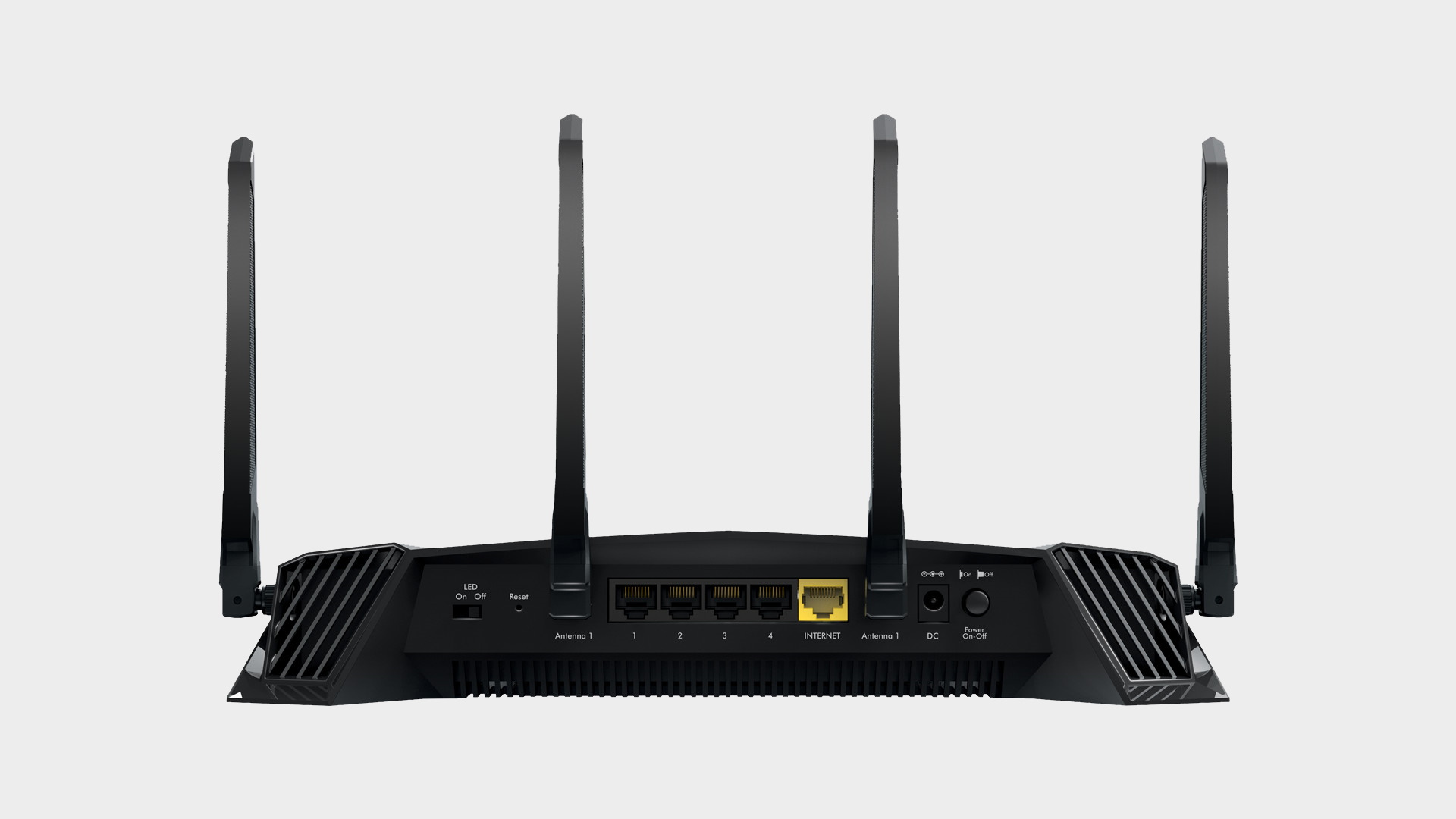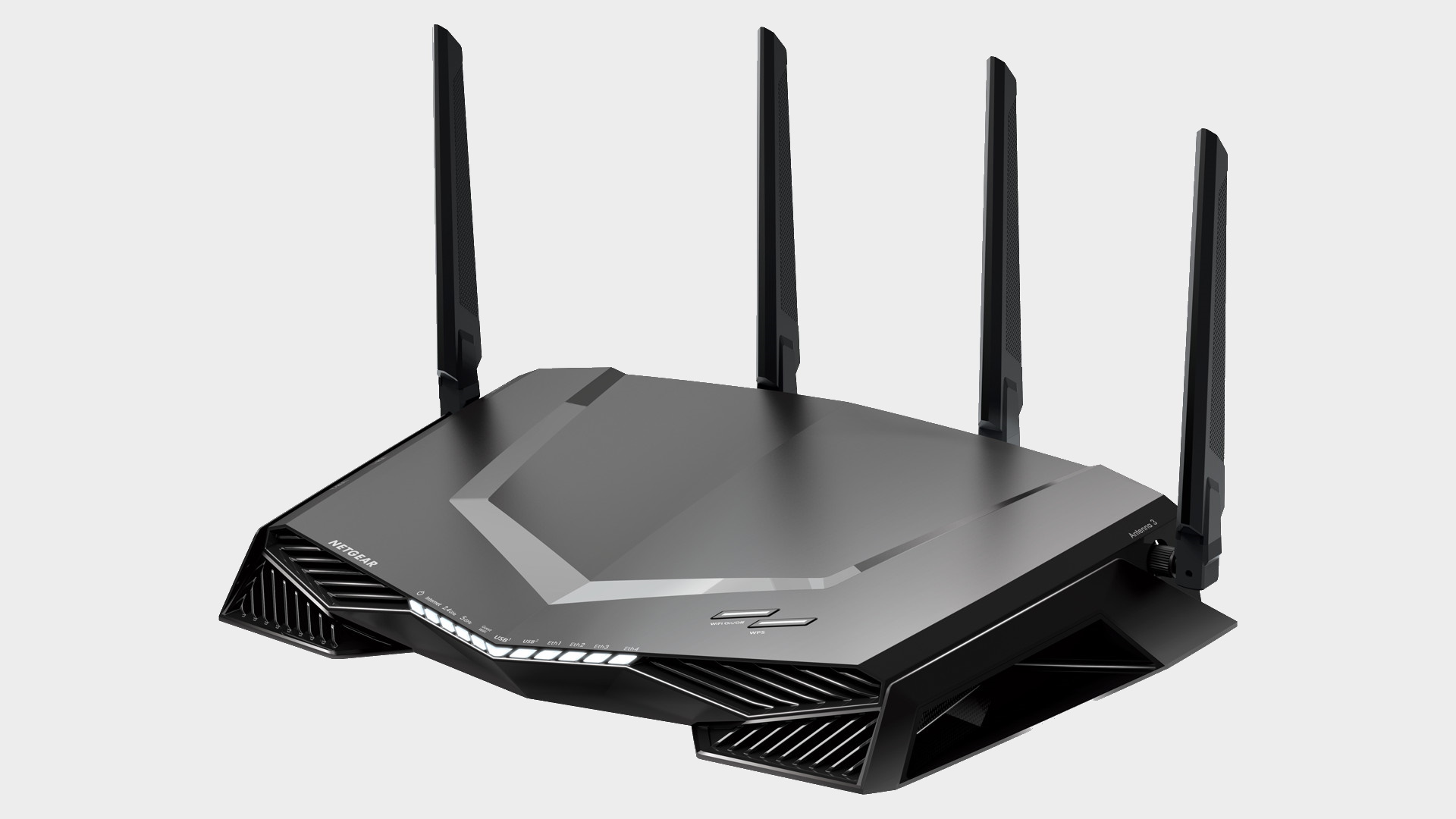Our Verdict
A router which backs up its aesthetic promise with a muscular interior, and truly flexes on the competition with one of the best management interfaces we've ever used.
For
- Fantastic traffic management
- Powerful, rangy Wi-fi
- Packed with extras
Against
- R-Apps Store lacking
- Still pretty pricey
- Only 802.11ac, not Wi-Fi 6
PC Gamer's got your back
What is the distinction between a router and gaming router? Where is that line really drawn? You can name your router something which sounds like it should only be uttered in the most gravelly end of Christian Bale's ludicrous Batman voice (seriously, try it yourself) and you can style it like a piece of important level decoration in Doom Eternal, like something which could have your eye out if you get too close. You can do that, but it had better not be simple window dressing. It needs to deliver where it counts as well.
Speed: AC2600
Wi-Fi: 5 (802.11ac)
LAN Ports: 4x gigabit
Antennas: 4
Processor: Dual-core 1.7GHz
Dimensions: 9.6 x 12.6 x 2.2 in
Weight: 1.77 lb (803 g)
A credible gaming router needs hardware that can back up its bravado with action. It needs searing Ethernet speed, it needs an internal processing package that isn't going to grind to a halt at cruical times, it needs Wi-Fi so strong it ought to come with a health warning. Predictably, given that incredibly leading intro, the Nighthawk XR500 delivers on all of these things. Which is a good job, given the high price tag attached to it.
Qualcomm's QCA9984 Wi-Fi chipset does the business of throwing around the dual-band 802.11ac bits. While you're unlikely to use it over the four on-board gigabit Ethernet ports, I found the Wi-Fi to be among the most powerful 802.11ac pacakge I'd ever brought into our test environment. Even with an awkward corner-of-the-house placement, the Nighthawk XR500's signal, pumped through four amplified antennas, meant it confidently outperformed the three-node Netgear Orbi mesh network it displaced. That just shouldn't be.
Signal strength, throughput; I could throw numbers at you, but your environment is going to be very different to mine. Just know it's fast, and more than fast enough to game on. It is not, though, Wi-Fi 6, and for a device that still maintains a high asking price after two years on the market, you would be forgiven for looking in the direction of, for example, Netgear's own Nighthawk AX12—though that is significantly more expensive than even this.
The XR500's processing has also been put in the able hands of Qualcomm, and Netgear has dropped in a sufficiently over-engineered package to ensure plenty of overhead. That means a dual-core processor running at 1.7GHz, backed up by 512MB of RAM. Small numbers in the wider scheme of things, and bested by more modern routers, but this is all about context: too few routers at this level needlessly skimp on the RAM or the CPU.
I can't conclusively say this is perfect, because the interface showed very occasional spikes to 100% on the CPU. Never, though, when I was really trying to tax it with multiple video streams and file transfers, nor when I added a USB-attached network drive to the mix and pushed that too; perhaps it was more of a reporting anomaly than a true max-out.

It has the hardware chops, then, as well it had better at this price. Even for a router which has just passed its second birthday, this punches above its weight. But that's not even the best thing about the Nighthawk XR500: the software package is absolutely superb. This packs NetDuma's excellent DumaOS platform, and every little slice of it makes quality-of-life networking super-simple.
There's a pinpoint Geo-filter, which lets you set your location, the distance from it that you're happy to accept game servers for a long list of titles, and the devices you want to conform to that filter. Super-neat, but not really applicable to the majority of PC games which allow you to choose your server; this is more a feature for consoles, which often don't give you the choice. That said, specifying the confusingly named Spectator Mode does make at least part of the Geo-filter facility applicable to your PC, at least if you're interested in the metrics of your connection and finding out a little more about the ins and outs of the server you're connected to.
QoS is a big deal here, and it's impeccably presented. You get a neat click-and-drag interface which lets you assign extra bandwidth to those devices which are likely to need it, and take it away from those that don't deserve it. Giving your gaming PC a big slice of router brainspace and putting that smart light bulb at the back of the queue where it belongs takes only a couple of seconds, and in our load tests it seemed to work perfectly. There's also configurable anti-bufferbloat, which works with the XR500's ability to detect high-priority packets to give your gaming traffic priority over anything else. That's super-neat.

The protein-packed power extends to normal router features, too. You'll find well presented network monitoring which gives you a live view of which devices are being greedy at any given moment, and a device manager which actually makes a lot of sense. Hybrid VPN integration, which lets you specify which devices use your VPN of choice, is also in there, along with basically every standard router feature you can think of. Saying the Nighthawk XR500 is fully featured would be to do it a disservice.
Not that it's all rosy. One miniscule disappointment with DumaOS is its extensibility: in theory you're able to add new apps, known as R-apps, to give your router new features. In practice this is apparently a proof-of-concept rather than an actual available feature. There's even a tantalising 'R-apps Store' component installed, just to taunt me. I didn't feel for a second like I'd actually need more than was there, but even more control on top of ultimate control doesn't sound like too bad a deal.
So does this meet the brief? Oh, absolutely. It's fantastic. I wouldn't judge you if you were looking for a Wi-Fi 6 router rather than plain 802.11ac in our best gaming router guide, because that's a sensible choice. You could certainly save money elsewhere and get less, too. You could, but the XR500's butt can still definitely cash those cheques its pointy exterior is writing.
A router which backs up its aesthetic promise with a muscular interior, and truly flexes on the competition with one of the best management interfaces we've ever used.


